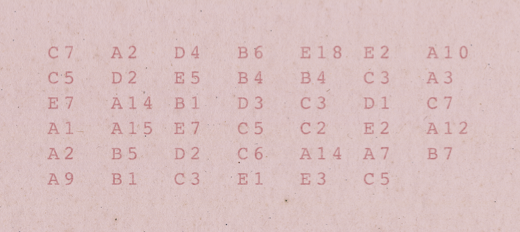The Tourist
5 old postcards from the Listenburg area.
A set of 5 postcards was released as an exclusive add-on to the Vandermist Dossier Kickstarter.
Each postcard contains one puzzle, separate from the others. Everything you need is on the card. Every solution takes the form of a word or phrase.
Here, you can find hints and check your solutions for each card. After solving all 5, there is one more phrase to find!
You’re looking for a 6 word phrase.
The digital-display-looking shapes are all perfectly symmetrical, apart from the shading of the segments. What might a darker segment signify?
The 2 words on the front of the postcard may help you understand.
Each shape is a word as it would appear on a 7-segment display, except adjacent letters overlap. Wherever two segments that are ‘on’ overlap, the result is a darker segment.
On the front of the card are two words to help you understand how this works. Each is superimposed over an image they are describing: ‘CLOUD’ and ‘RAIN’.
Focusing on CLOUD, for example, you can see there are no dark segments in the C or L, because even though the letters are smushed together, they don’t use any common segments. The sides of the U are darker, because they overlap with the sides of the O and the D.
The I in rain is darker still: that’s where the right side of the A, the whole I, ánd the left side of the N overlap.
Now, use this same logic on the words on the back. The 6 words at the bottom are your solution.
The Manders Monument is in honor of Maarten Manders, a 14th century hero from the Logenen area, remembered for slaying Louise Dauphey. Who was she?
“A HELLISH NUN, TERRIBLY GODHOOD OBSESSED.”
Hallelujah.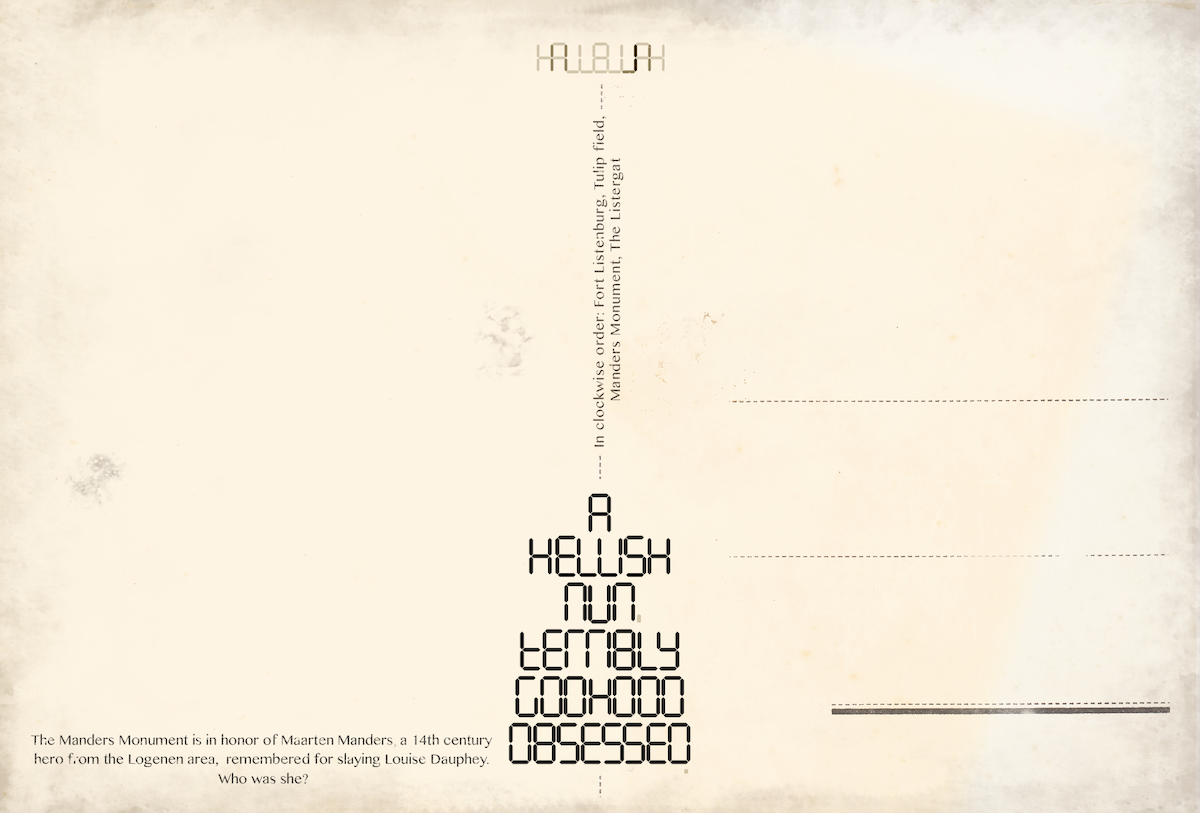
You’re looking to complete the sentence on the back of the card: “…since replaced by [—].”
Looking at the numbered circles on the back: three of those are colored in. What is special about those circles?
Only the colored in circles (the 1 and 3 at the top and the 1 halfway down) are in their solved state. What do you need to add to solve every circle?
This is a variation on a classic puzzle. Add line segments to the grid, connecting adjacent circles in the right places. The number in a circle is equal to the number of lines it connects to (meaning the colored-in circles cannot have any more lines coming out of them).
All lines connect to form one final shape, which can be read as a word from top to bottom.
A GAZEBO
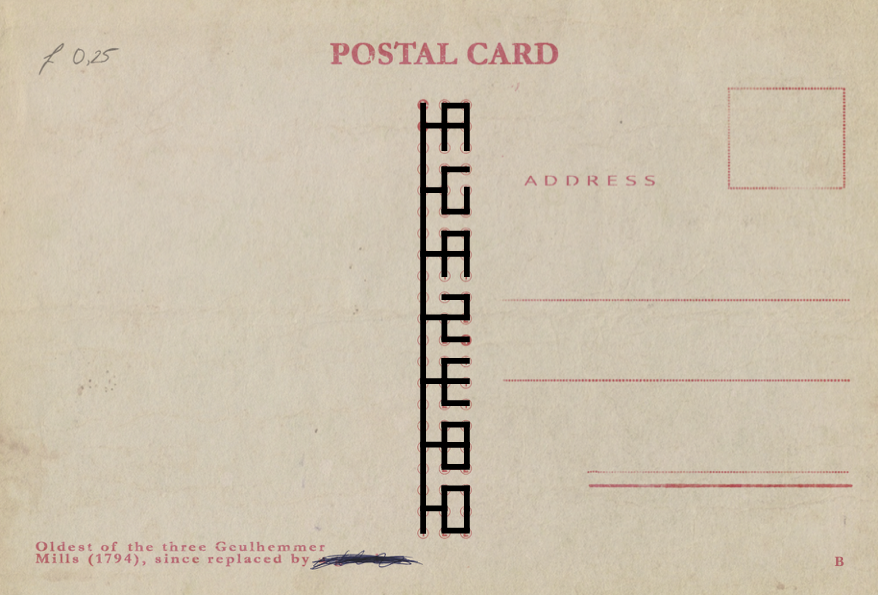
You’re looking for a 7-letter word to complete the sentence on the back of the card: “…photo taken on a [—].”
The question mark on the front is weirdly anachronistic, and it shares some features with the squares on the back. Can it help you figure out how to understand them?
The squares on the back are 2D depictions of 3D shapes. Like the question mark, the shapes are white on the outside and dark grey on the inside.
Can you figure out how to combine the squares into one solution?
You’re trying to create 7 cubic letters. The lines of 7 squares depict top, left, right and bottom views of these shapes.
FILMSET
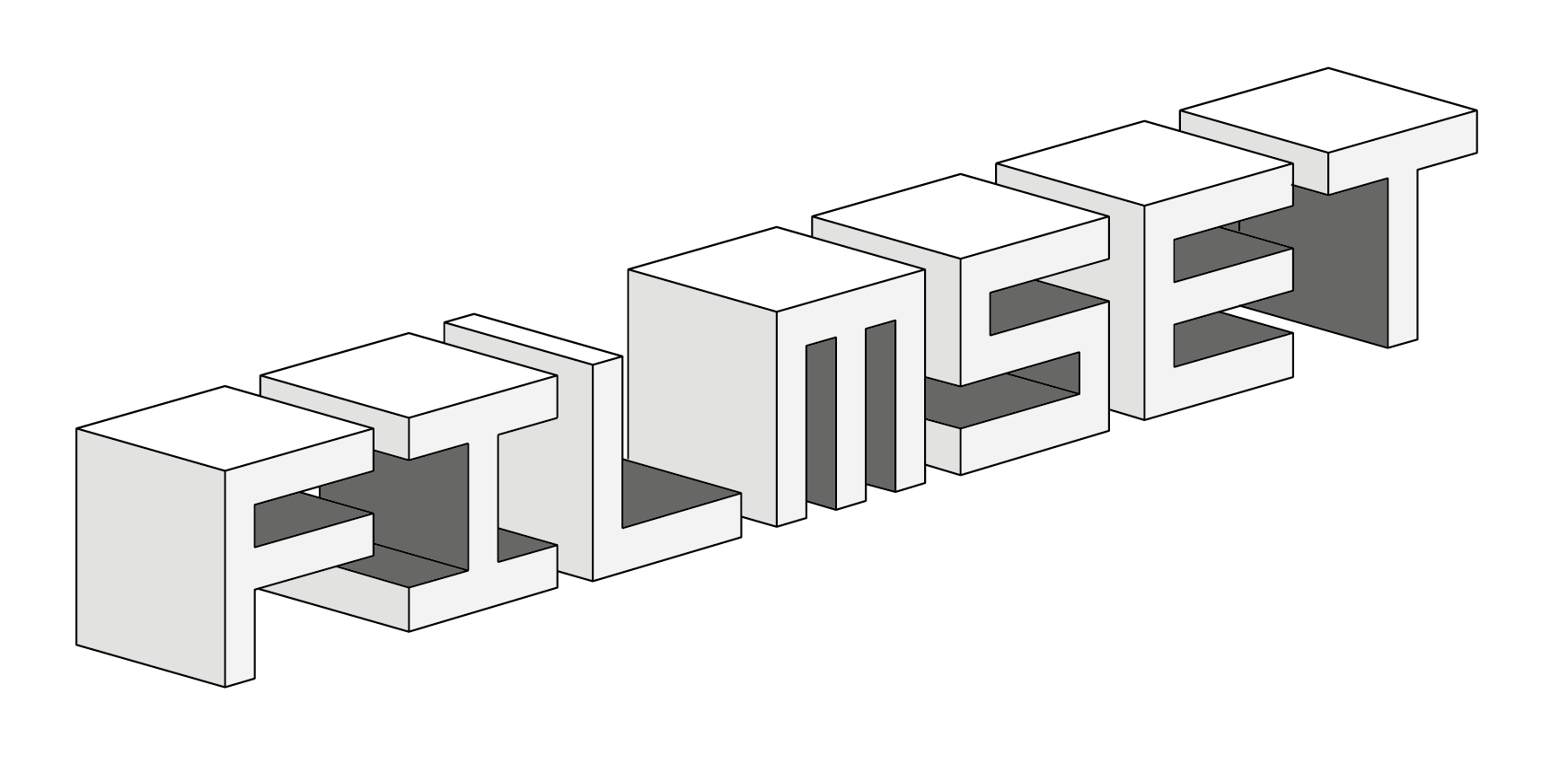
You’re looking for a 5-letter word that’s the answer to “Listenburg’s best kept secret.”
You may have noticed there are hexagons on both side of the postcard. But while the hexagons on the back are mostly empty, the one on the front has many lines criss-crossing it. Can you use these lines somehow?
Every side of the large hexagon has 3 lines passing through it; left, middle and right.
You can ignore the colors, that’s just touristy red, white and blue
All the little hexagons on the back are copies of the big one on the front. The trapezoid bars give you their orientation.
With this in mind, start at the given points (red and blue) and follow the paths to create shapes. You don’t need to completely copy all the lines into every hexagon. Just follow the path and determine where it crosses each border.
SPIES
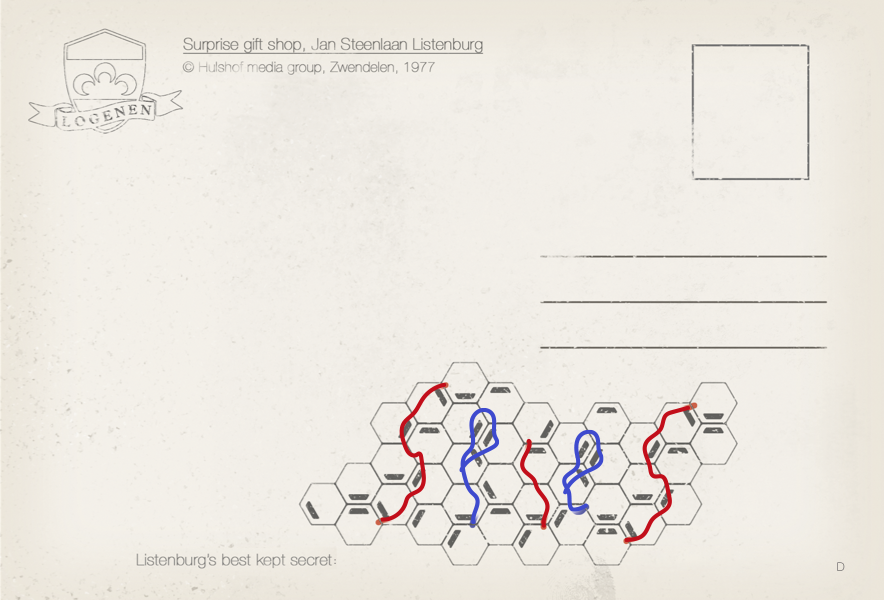
On the back of this card, there seems to be very little to go on. Still, there is something crucial there!
The ribbon letters on the front have the same coloring as the “air mail” stripes on the back.
There are tiny dots and dashes in the ribbons on the back. What do they remind you of?
With that in mind, what could the stitches on the ribbon letters mean?
The ribbons letters on the front spell out a message in morse code. A visible bit of the red side signifies a DOT, the blue side a DASH.
A single stitch across a piece of ribbon divides it in two. So, for example, the 3rd upstroke of the W in wish signifies 2 DOTS instead of 1.
A double stitch is the end of a letter.
In this image, the ribbon is cut up across each double dashed line:
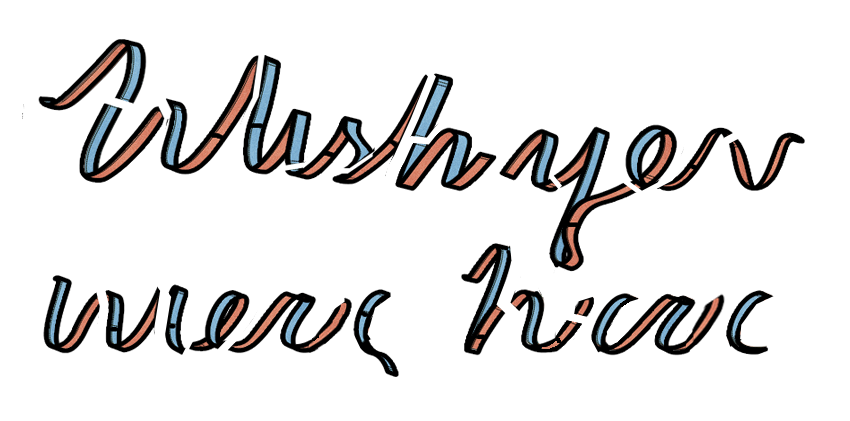
Giving this morse code:
.- -. -.. –.- ..- .. – -.-. .- .-.. .-.. .. -. –. — . -.-. — .-.. .-.. . -.-. –
Which translates to
(Wish you were here…) “and quit calling me collect.”
Looking for the final phrase?
Did you find all 5 answers and want to know the final phrase?
Notice the little letters in the corner of every postcard?
Did you keep the wrapper the postcards came in?
If you lost the wrapper, here’s the clue that was printed on the inside:
